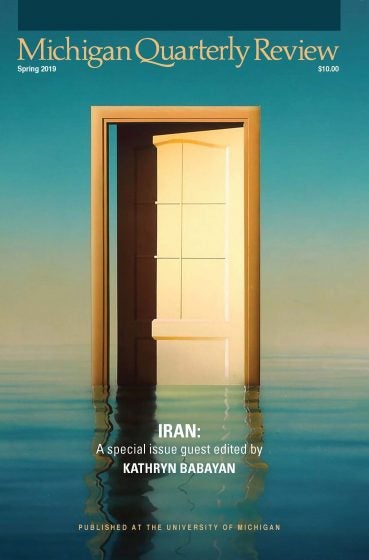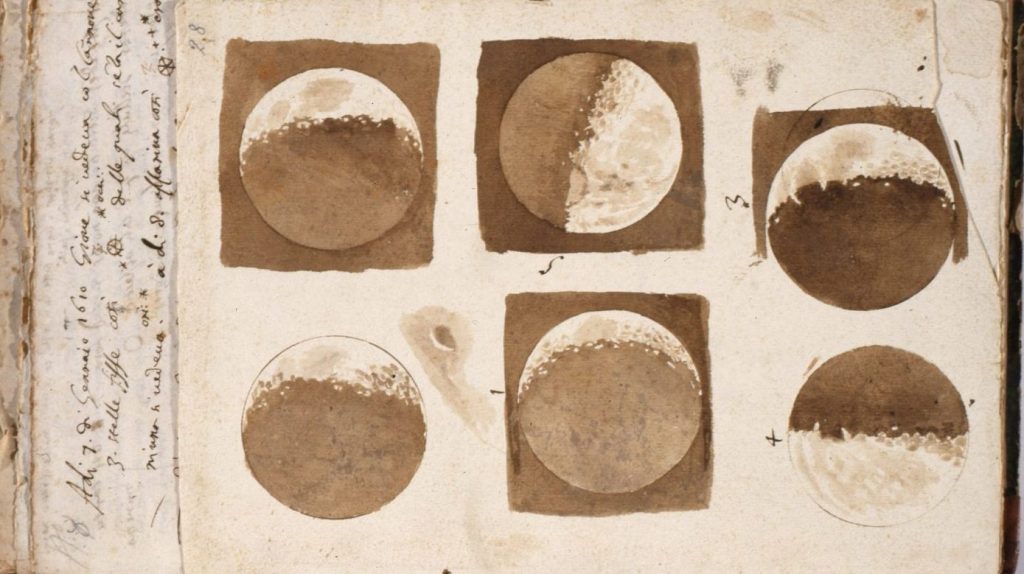Why I Chose It: Michigan Quarterly Review Reader Michael M. Weinstein introduces Sohrab Sepehri’s poem “Toward the Image of the Friend,” Translated by Franklin Lewis, from our Spring 2019 Issue: Iran.
The poems of Sohrab Sepehri (1928-1980) occupy a special place in the history of Persian poetry, and in the current issue of MQR, which aims to give voice to a wide range of Iranian perspectives—canonical and contemporary, local and diasporic. Sohrab, a poet so iconic that he is often referred to in Iran by his first name alone, was also a painter; a world traveler; a lifelong bachelor; a mystic; and an acolyte of both Buddhist and Islamic thought. He was, by all accounts, mysterious and solipsistic: a visionary who eschewed worldly concerns but refused to abandon the realities of nature. And while many prominent poets of his generation, including Reżā Barāheni and Ahmad Shamlou, derided Sohrab’s work as insufficiently political, his work is now celebrated as one of the most lasting contributions to Iranian literature of the past century.
The cornerstone of Sohrab’s credo was attentiveness to the natural world. The title of one of his most famous collections, Mā hič, mā negāh (1977), roughly translates to We Are Nothing but the Gaze. His faith in the poet’s capacity to perceive the beauty of God by means of nature aligns him with Anglophone poets like Gerard Manley Hopkins, while his mystical intensity might call to mind the work of European modernists like Rainer Maria Rilke or Boris Pasternak. Like all of these figures, Sohrab was one of the first poets in his own cultural context to break away from the formal verse structures of his forebears (such as the ghazaland and the matnawi of Classical Persian poetry) and write free verse. His formal innovation, spiritual world-view, and keenly observant, painterly eye are all on display in “Toward the Image of the Friend,” beautifully translated by Franklin Lewis.
Here, Sohrab views a classic Iranian landscape, complete with a river and cypress trees, as a text in itself. “The moon,” “the color of scriptural gloss,” “ris[es] like the sorrow of explication.” “The stiff lines of globe thistles” are likened to the stiff and diacritic-less lines of Kufic script, legible only with difficulty. In some sense, Sohrab suggests, we are always already late to the beauties of nature—inscribed as they are with past interpretations and man-made damages alike. It is impossible to see the landscape without also being a part of the landscape, casting our “nets of awareness” over the details we hope to take in, and thereby changing them, even if only in small, momentary ways. From a human perspective, we can get only so close to these details, because we cannot see the stream without anthropomorphizing it, “hear[ing]” its “fluid sentence”: “It murmured to itself (so it seemed).” We can describe it but never quite catch it, since, “There are no words as limpid as this.”
In the poem’s final turn, the speaker at last reveals himself: “I was near the rivulet, / thinking: How clear tonight / the path of ascension for / all things.” This image recalls the Prophet Muhammad’s ascension to Heaven, and yet the poem resists any clear-cut religious interpretation. The “Friend” of the title is not necessarily a god, but just that: a friend—endowed, it seems, with a greater awareness, a more aerial perspective, than the speaker can muster. The Friend represents a visionary vantage point towards which the speaker strives, or what his fellow modernist Wallace Stevens would call, “a new knowledge of reality.”
Our contemporary political climate and rhetoric surrounding Iran could not be further from the peaceful and deeply attentive ethos of Sohrab’s work. But perhaps this supposedly “apolitical” poet offers a corrective to the facile, flawed generalizations we might tend to make about cultures like his. The true nature of any locale, he seems to suggest, is at once more absolute and more nuanced than any words can capture. His poetry stands as a reminder of Iran’s rich and cosmopolitan literary past, even as its blend of mysticism and clarity, lyricism and earthiness, continues to resonate beyond the borders of time and place.
___________________________________________________________________________________________
The moon
was the copper of scriptural gloss
rising like the sorrow of explication
The cypress
a stark cry of the soil
The pine, in close
like a mound of understanding
inking the blank page of the season
The stiff lines of globe thistles
read like Kufic script
The vapors of realization were mustering,
rising from the dark loam-lands
The Friend
touching the nets of awareness
felt the filaments cast over things
He heard the fluid sentence of the stream
It murmured to itself (so it seemed):
There are no words so limpid as this
I was near the rivulet,
thinking:
How clear tonight
the path of ascension for
all things.
Translated from the Persian
by Franklin Lewis
Purchase MQR 57:6 or consider a one-year subscription to read more. Sohrab Sepehri’s poem “Toward the Image of the Friend” appears in the Spring 2019 Issue of MQR on Iran.




